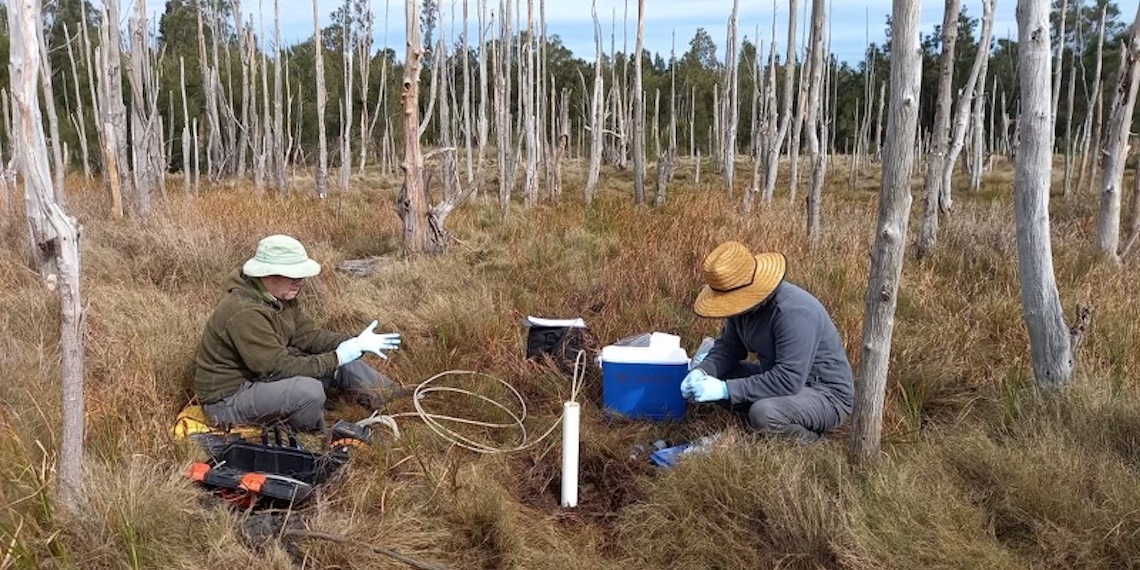Data research collaboration bolsters the future of water management in NSW

Collecting data for catchment-wide water management is a challenge right across Australia, but, with NSW home to one of the most complex basin systems in the world, harnessing the power of data will be essential to the future of water management in the state.
To do this, NSW Smart Sensing Network (NSSN) has facilitated a research collaboration between universities and government partners to unlock new insights into NSW water data using innovative approaches.
Researchers from the Australian National University, Macquarie University, UNSW and the University of Sydney have joined the NSW Department of Planning and Environment to trial new technology and data-modelling techniques to enhance the state’s water management capability.
NSSN Development Manager Don McCallum said the NSW Chief Scientists Office was looking for a way to respond to many of the environmental and economic issues facing the state, including water management concerns.
“By bringing in universities and broader industry to help, they were able to get a more involved response to some of the challenges that the state is facing,” he said.
“NSW faces some particularly pressing challenges around water management. Whether in flood, drought, or the times in between, we need a better understanding of what is going on with the state’s water balance.”
McCallum said NSW is a big place, and despite boasting world-leading data practices, there is still a need to do more in terms of achieving a higher level of transparency.
“In some cases we have 10s or 100s of kilometers between sensing stations,” he said.
“In some places, they are telemetered quite well and information is distributed in real time; in other places we don’t have any telemetry at all and rely on handwritten notes and a phone call to transmit information across.
“There’s still quite a lot of fundamental science missing, as well. We think we do know a lot, but there is still a lot more to do.”
McCallum said the need for a more advanced approach to water data modelling led the state government to launch a forum in 2019.
“NSSN ran that forum and worked with government agencies to create a complex, efficient, unique and very well-structured program called Where is All the Water?,” he said.
Deeper understanding
The Where is All the Water? project aimed to develop a technology framework and roadmap to enable evidence-based, integrated management of water resources in NSW.
The university partners led a range of technology trials, combining existing data sets with the latest developments in low-cost sensing, quantum gravity sensing, gravity data sets coming from NASA satellites and data fusion techniques to address gaps in current knowledge of water location and movement.
“The water management and data being collected in NSW is world-class. But some of the publicly available water reporting has massive unaccounted-for differences,” McCallum said.
“In some river stretches, around the Lachlan, Gwydir and the Macquarie rivers, there are discrepancies in terms of how much water is going into the system and how much is coming out. These discrepancies range anywhere between 20% and 40%,” McCallum said.
“And we are talking about megalitres of water, if not gigalitres in some cases. So, where is all this water going? Is it evaporation, is it entering aquifer systems? The hydrological connectivity between rivers and aquifers (surface water and ground water) is still largely unknown in some of these places.
“We have an idea of where the big underground basins and aquifers are, but how the water is moving around underground can be quite difficult to track. There are a lot of issues with water allocations for agriculture and cities, and for other industrial practices, which also needs to be taken into consideration, too.”
McCallum said NSW has one of the most complex basins in the world, and the university partnership framework is all about coming together with leading experts to tackle water data collection and modelling to help manage water.
“We know that rivers aren't pipes. They don’t simply carry water from A to B. They interact with everything around them, above and below ground. And we need more insight,” he said.
“So we wanted to see what kind of innovative new research was out there to help us overcome this problem. Part of that was to get more sensors out, and telemetry sensors that were transmitting good quality data in real time,” he said.
Cutting edge science and technology
Researchers from ANU led two sub-projects in the program, including local gravity sensing and satellite gravity measurements of Australian water data from NASA satellites to show the gravitational pull of water at a continent-wide scale, revealing new information on how water moves through the landscape.
Macquarie University researchers, who are experts in low-cost monitoring, demonstrated the utility of high spatial resolution sensing using low-cost sensors.
UNSW researchers provided a wealth of background knowledge on all aspects of hydrology and led an investigation into the recharge mechanisms of aquifers, and the University of Sydney conducted probabilistic modelling for insights into how uncertainty around water measurements can be addressed.
“We’re very proud of our universities. They are leading some exceptionally innovative research. From quantum sensing to the application of Bayesian analytics and artificial intelligence, the program brought some of the most cutting-edge approaches to the challenge of measuring water in NSW,” McCallum said.
McCallum said that while the project is coming to an end, Where is All the Water? has demonstrated the capacity for the latest university research to help government and stakeholders overcome challenges in water management by developing a deeper knowledge of water.
“We have created a collaborative platform or framework, demonstrating that universities can very efficiently and effectively work with industry partners. And it can be repeated, and we’d like to do it again,” he said.
Interested in taking a closer look at the outcomes of each of the partnership universities’ research focuses? Access the final report here.
Image credit: UNSW - Field work conducted in northern NSW.

